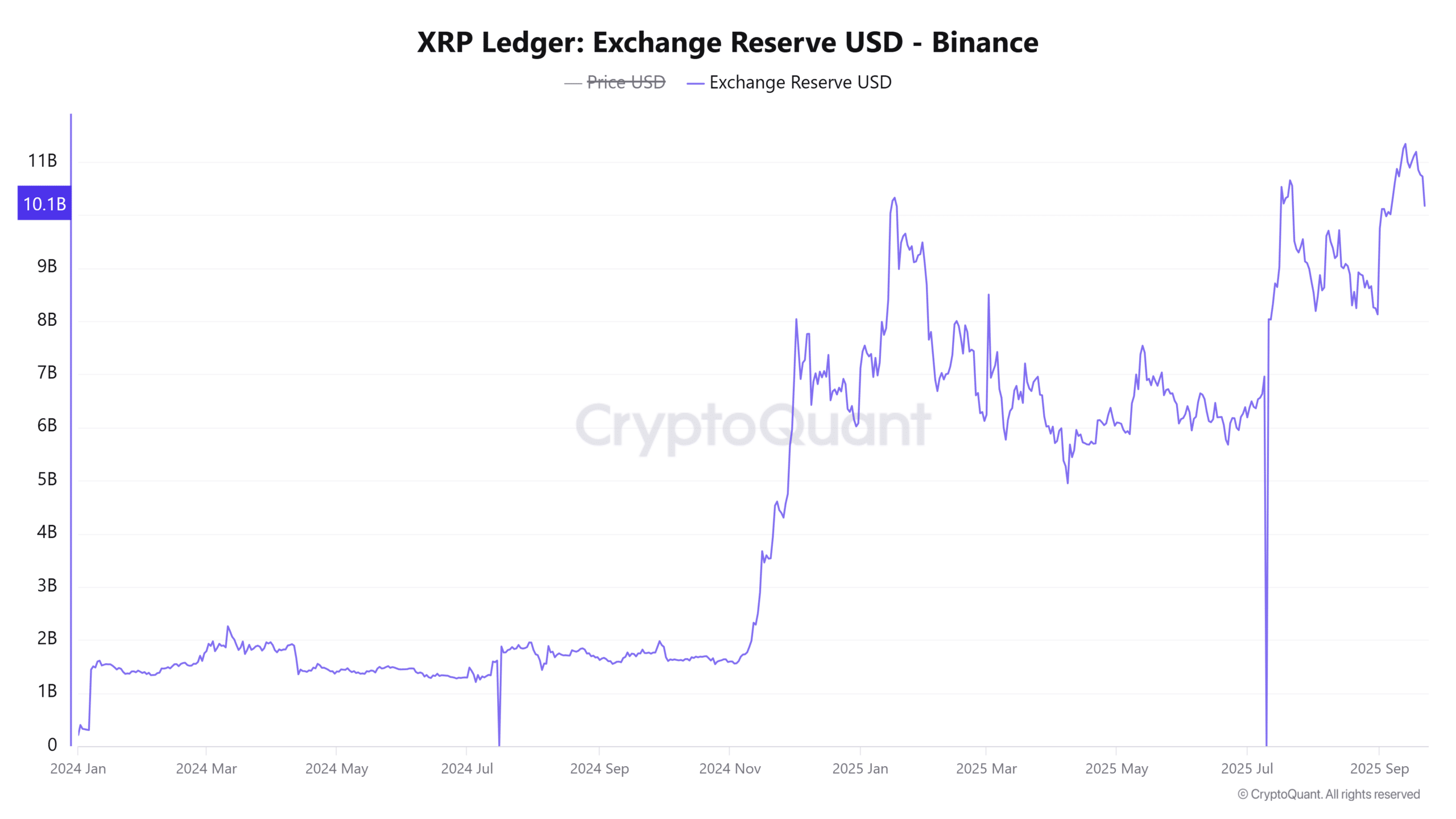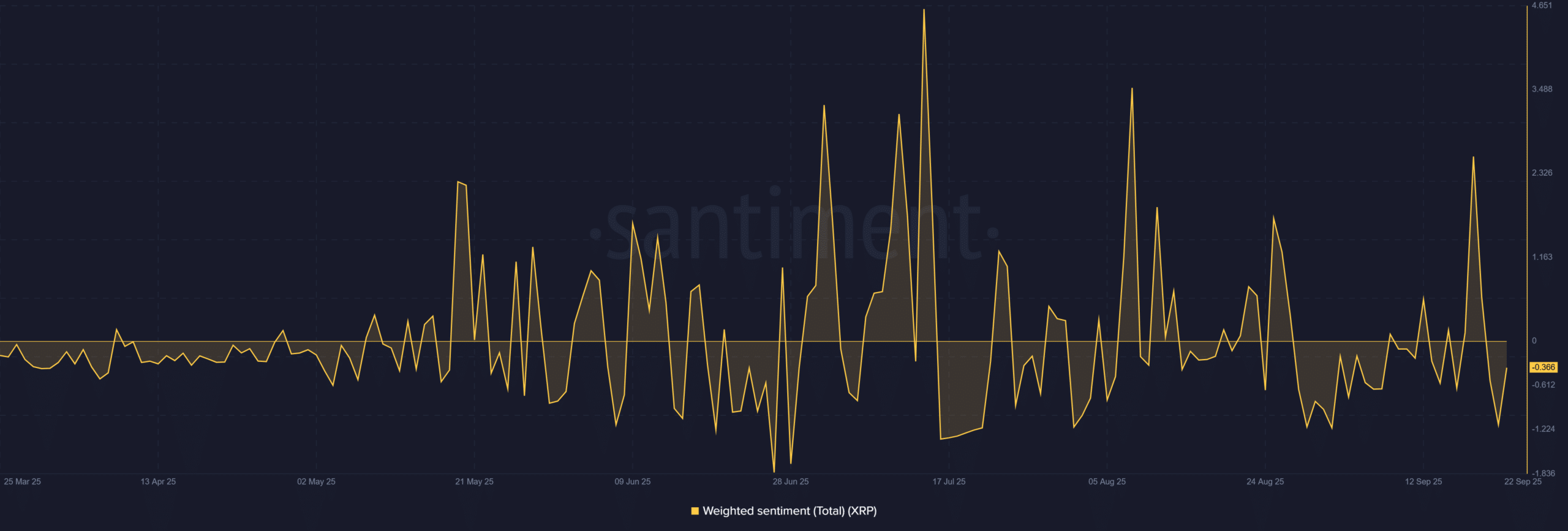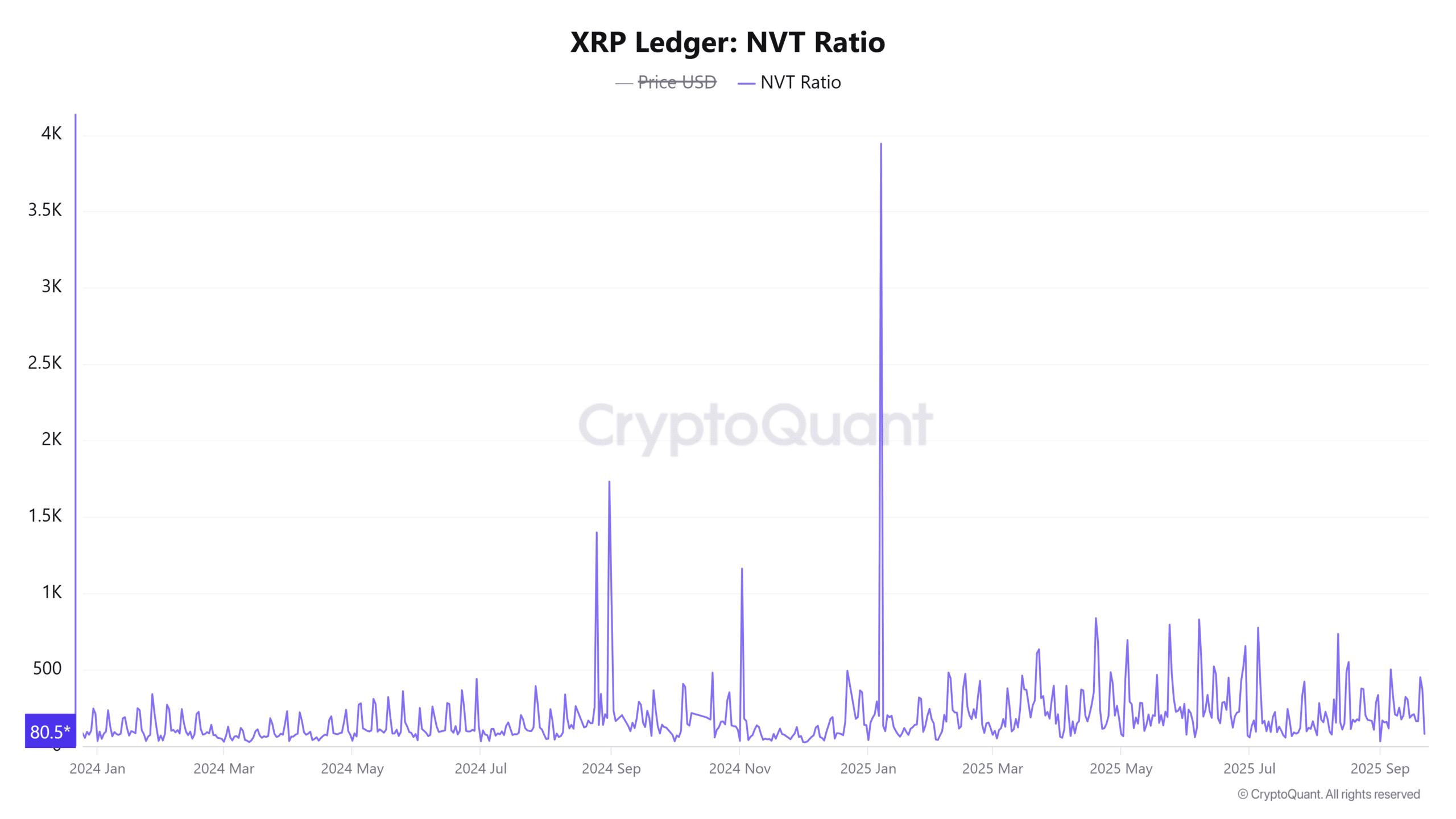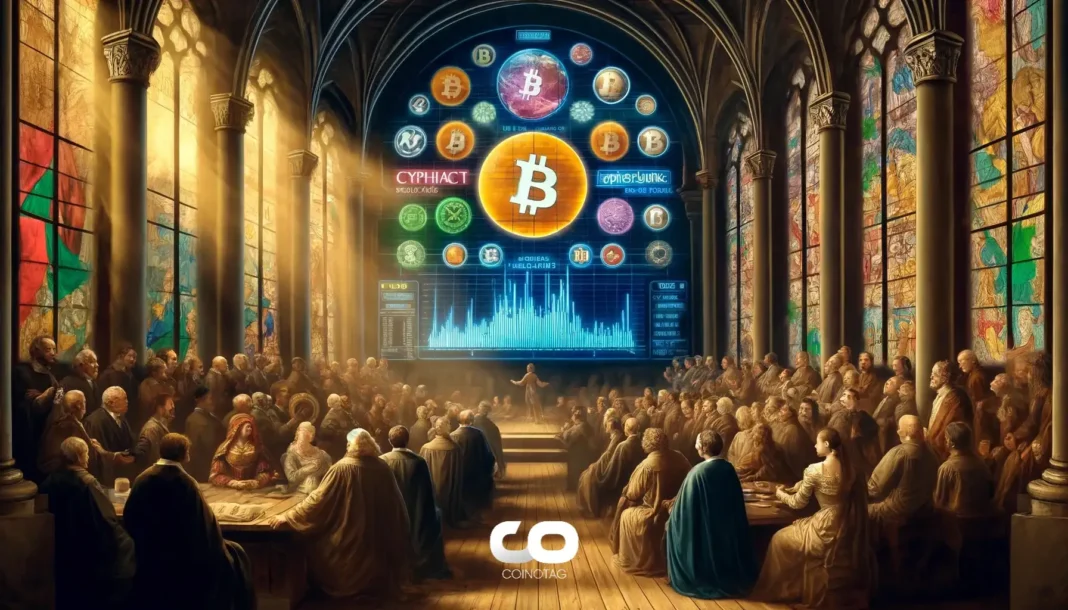| COINOTAG recommends • Exchange signup |
| 💹 Trade with pro tools |
| Fast execution, robust charts, clean risk controls. |
| 👉 Open account → |
| COINOTAG recommends • Exchange signup |
| 🚀 Smooth orders, clear control |
| Advanced order types and market depth in one view. |
| 👉 Create account → |
| COINOTAG recommends • Exchange signup |
| 📈 Clarity in volatile markets |
| Plan entries & exits, manage positions with discipline. |
| 👉 Sign up → |
| COINOTAG recommends • Exchange signup |
| ⚡ Speed, depth, reliability |
| Execute confidently when timing matters. |
| 👉 Open account → |
| COINOTAG recommends • Exchange signup |
| 🧭 A focused workflow for traders |
| Alerts, watchlists, and a repeatable process. |
| 👉 Get started → |
| COINOTAG recommends • Exchange signup |
| ✅ Data‑driven decisions |
| Focus on process—not noise. |
| 👉 Sign up → |
XRP whale accumulation indicates growing institutional interest and reduced sell-side pressure, supporting a near-term rebound. Large wallets bought ~30 million XRP while exchange reserves fell 2.91% and NVT dropped 78.5%, pointing to tighter supply and rising transactional utility that could underpin price stabilization.
-
Whales bought ~30 million XRP, signaling renewed accumulation.
-
Exchange reserves declined 2.91%, reducing immediate sell liquidity.
-
NVT ratio fell 78.5%, showing transactional activity rising faster than market value.
XRP whale accumulation signals a potential rebound: 30M tokens bought, reserves down 2.91% and NVT -78.5%. Read our data-driven analysis now.
| COINOTAG recommends • Professional traders group |
| 💎 Join a professional trading community |
| Work with senior traders, research‑backed setups, and risk‑first frameworks. |
| 👉 Join the group → |
| COINOTAG recommends • Professional traders group |
| 📊 Transparent performance, real process |
| Spot strategies with documented months of triple‑digit runs during strong trends; futures plans use defined R:R and sizing. |
| 👉 Get access → |
| COINOTAG recommends • Professional traders group |
| 🧭 Research → Plan → Execute |
| Daily levels, watchlists, and post‑trade reviews to build consistency. |
| 👉 Join now → |
| COINOTAG recommends • Professional traders group |
| 🛡️ Risk comes first |
| Sizing methods, invalidation rules, and R‑multiples baked into every plan. |
| 👉 Start today → |
| COINOTAG recommends • Professional traders group |
| 🧠 Learn the “why” behind each trade |
| Live breakdowns, playbooks, and framework‑first education. |
| 👉 Join the group → |
| COINOTAG recommends • Professional traders group |
| 🚀 Insider • APEX • INNER CIRCLE |
| Choose the depth you need—tools, coaching, and member rooms. |
| 👉 Explore tiers → |
What is XRP whale accumulation telling investors?
XRP whale accumulation describes large addresses increasing holdings, which can signal institutional or large-holder confidence. Recent on-chain data shows ~30 million XRP moved into accumulation while exchange reserves fell, suggesting less immediate sell pressure and a higher probability of price support if demand persists.
| COINOTAG recommends • Exchange signup |
| 📈 Clear interface, precise orders |
| Sharp entries & exits with actionable alerts. |
| 👉 Create free account → |
| COINOTAG recommends • Exchange signup |
| 🧠 Smarter tools. Better decisions. |
| Depth analytics and risk features in one view. |
| 👉 Sign up → |
| COINOTAG recommends • Exchange signup |
| 🎯 Take control of entries & exits |
| Set alerts, define stops, execute consistently. |
| 👉 Open account → |
| COINOTAG recommends • Exchange signup |
| 🛠️ From idea to execution |
| Turn setups into plans with practical order types. |
| 👉 Join now → |
| COINOTAG recommends • Exchange signup |
| 📋 Trade your plan |
| Watchlists and routing that support focus. |
| 👉 Get started → |
| COINOTAG recommends • Exchange signup |
| 📊 Precision without the noise |
| Data‑first workflows for active traders. |
| 👉 Sign up → |
How do exchange reserves and NVT affect XRP’s outlook?
Lower exchange reserves mean fewer tokens available for instant sale. Exchange-held XRP dropped by 2.91% to about $10.16 billion, tightening available supply and reducing potential downside liquidity.
NVT (Network Value to Transaction) fell 78.5%, indicating transaction volume rose faster than market capitalization. A declining NVT often reflects improving utility, which can precede price appreciation when investors notice increased on-chain usage.
| COINOTAG recommends • Traders club |
| ⚡ Futures with discipline |
| Defined R:R, pre‑set invalidation, execution checklists. |
| 👉 Join the club → |
| COINOTAG recommends • Traders club |
| 🎯 Spot strategies that compound |
| Momentum & accumulation frameworks managed with clear risk. |
| 👉 Get access → |
| COINOTAG recommends • Traders club |
| 🏛️ APEX tier for serious traders |
| Deep dives, analyst Q&A, and accountability sprints. |
| 👉 Explore APEX → |
| COINOTAG recommends • Traders club |
| 📈 Real‑time market structure |
| Key levels, liquidity zones, and actionable context. |
| 👉 Join now → |
| COINOTAG recommends • Traders club |
| 🔔 Smart alerts, not noise |
| Context‑rich notifications tied to plans and risk—never hype. |
| 👉 Get access → |
| COINOTAG recommends • Traders club |
| 🤝 Peer review & coaching |
| Hands‑on feedback that sharpens execution and risk control. |
| 👉 Join the club → |
Frequently Asked Questions
Is whale buying a reliable bullish indicator for XRP?
Whale buying can signal accumulation and confidence, but it is not definitive alone. Combine whale activity with exchange reserves, NVT trends, and sentiment for a more reliable assessment in 40-50 words.
| COINOTAG recommends • Exchange signup |
| 📈 Clear control for futures |
| Sizing, stops, and scenario planning tools. |
| 👉 Open futures account → |
| COINOTAG recommends • Exchange signup |
| 🧩 Structure your futures trades |
| Define entries & exits with advanced orders. |
| 👉 Sign up → |
| COINOTAG recommends • Exchange signup |
| 🛡️ Control volatility |
| Automate alerts and manage positions with discipline. |
| 👉 Get started → |
| COINOTAG recommends • Exchange signup |
| ⚙️ Execution you can rely on |
| Fast routing and meaningful depth insights. |
| 👉 Create account → |
| COINOTAG recommends • Exchange signup |
| 📒 Plan. Execute. Review. |
| Frameworks for consistent decision‑making. |
| 👉 Join now → |
| COINOTAG recommends • Exchange signup |
| 🧩 Choose clarity over complexity |
| Actionable, pro‑grade tools—no fluff. |
| 👉 Open account → |
How quickly can reduced exchange reserves affect price?
Reduced exchange reserves can tighten liquidity quickly if demand rises. The observed 2.91% drop lowers immediate sell supply, which can amplify price moves during demand surges and should be monitored for rapid impacts.
Key Takeaways
- Whale accumulation is increasing: Large wallets added ~30 million XRP, indicating renewed large-holder interest.
- Exchange reserves are falling: A 2.91% decline reduces immediate sell-side liquidity and supports supply tightening.
- NVT and sentiment point to improving fundamentals: NVT fell 78.5%, showing rising transactional value while sentiment mildly rebounded but remains negative; combine these for risk-managed decisions.
Conclusion
Whale accumulation, shrinking exchange reserves, a rebounding yet negative sentiment score, and a sharply lower NVT ratio together suggest XRP is developing the on-chain conditions for a potential rebound. Investors should weigh these signals alongside risk controls and monitor liquidity metrics and transactional trends for confirmation. COINOTAG will continue to track updates and on-chain data for decisive signals.
| COINOTAG recommends • Members‑only research |
| 📌 Curated setups, clearly explained |
| Entry, invalidation, targets, and R:R defined before execution. |
| 👉 Get access → |
| COINOTAG recommends • Members‑only research |
| 🧠 Data‑led decision making |
| Technical + flow + context synthesized into actionable plans. |
| 👉 Join now → |
| COINOTAG recommends • Members‑only research |
| 🧱 Consistency over hype |
| Repeatable rules, realistic expectations, and a calmer mindset. |
| 👉 Get access → |
| COINOTAG recommends • Members‑only research |
| 🕒 Patience is an edge |
| Wait for confirmation and manage risk with checklists. |
| 👉 Join now → |
| COINOTAG recommends • Members‑only research |
| 💼 Professional mentorship |
| Guidance from seasoned traders and structured feedback loops. |
| 👉 Get access → |
| COINOTAG recommends • Members‑only research |
| 🧮 Track • Review • Improve |
| Documented PnL tracking and post‑mortems to accelerate learning. |
| 👉 Join now → |
Data and sources
Sources referenced as plain text: CryptoQuant, Santiment. Publication and update date: 2025-09-23. Author/Organization: COINOTAG.
On-chain charts and visuals
Whales have boosted their Ripple [XRP] exposure with a massive 30 million token buy, suggesting renewed interest in the asset’s mid-term potential.
| COINOTAG recommends • Exchange signup |
| 🎯 Focus on process over noise |
| Plan trades, size positions, execute consistently. |
| 👉 Sign up → |
| COINOTAG recommends • Exchange signup |
| 🛠️ Simplify execution |
| Keep decisions clear with practical controls. |
| 👉 Get started → |
| COINOTAG recommends • Exchange signup |
| 📊 Make data your edge |
| Use depth and alerts to avoid guesswork. |
| 👉 Open account → |
| COINOTAG recommends • Exchange signup |
| 🧭 Be prepared, not reactive |
| Turn setups into rules before you trade. |
| 👉 Create account → |
| COINOTAG recommends • Exchange signup |
| ✍️ Plan first, then act |
| Entries, exits, and reviews that fit your routine. |
| 👉 Join now → |
| COINOTAG recommends • Exchange signup |
| 🧩 Consistency beats intensity |
| Small, repeatable steps win the long run. |
| 👉 Sign up → |
Such accumulations have historically reflected confidence in price recovery, as these large players often seek favorable entry points before wider rallies.
Notably, this wave of buying has arrived while price action remains shaky, amplifying its potential impact on upcoming trends.
| COINOTAG recommends • Premium trading community |
| 🏛️ WAGMI CAPITAL — Premium Trading Community |
| Strategic insights, exclusive opportunities, professional support. |
| 👉 Join WAGMI CAPITAL → |
| COINOTAG recommends • Premium trading community |
| 💬 Inner Circle access |
| See members share real‑time PnL and execution notes in chat. |
| 👉 Apply for Inner Circle → |
| COINOTAG recommends • Premium trading community |
| 🧩 Turn theses into trades |
| Reusable templates for entries, risk, and review—end to end. |
| 👉 Join the club → |
| COINOTAG recommends • Premium trading community |
| 💡 Long‑term mindset |
| Patience and discipline over noise; a process that compounds. |
| 👉 Get started → |
| COINOTAG recommends • Premium trading community |
| 📚 Education + execution |
| Courses, playbooks, and live market walkthroughs—learn by doing. |
| 👉 Get access → |
| COINOTAG recommends • Premium trading community |
| 🔒 Members‑only research drops |
| Curated analyses and private briefings—quality over quantity. |
| 👉 Join WAGMI CAPITAL → |
Furthermore, it demonstrates that capital inflow into XRP is rising even when retail participation appears less active, underscoring a quiet but important vote of confidence.
Exchange reserves slide as sell pressure weakens
A critical metric supporting whale behavior is the decline in XRP exchange reserves, which fell by 2.91% to around $10.16 billion.
| COINOTAG recommends • Exchange signup |
| 🧱 Execute with discipline |
| Watchlists, alerts, and flexible order control. |
| 👉 Sign up → |
| COINOTAG recommends • Exchange signup |
| 🧩 Keep your strategy simple |
| Clear rules and repeatable steps. |
| 👉 Open account → |
| COINOTAG recommends • Exchange signup |
| 🧠 Stay objective |
| Let data—not emotion—drive actions. |
| 👉 Get started → |
| COINOTAG recommends • Exchange signup |
| ⏱️ Trade when it makes sense |
| Your plan sets the timing—not the feed. |
| 👉 Join now → |
| COINOTAG recommends • Exchange signup |
| 🌿 A calm plan for busy markets |
| Set size and stops first, then execute. |
| 👉 Create account → |
| COINOTAG recommends • Exchange signup |
| 🧱 Your framework. Your rules. |
| Design entries/exits that fit your routine. |
| 👉 Sign up → |
This drop signals that fewer tokens are available for immediate selling, lowering the likelihood of sharp downside pressure.
Historically, outflows from exchanges align with accumulation phases, as long-term holders prefer off-exchange storage.
Moreover, reduced reserves often coincide with supply tightening, creating conditions that support bullish moves.
Consequently, the combination of whale buying and shrinking reserves builds a case for XRP maintaining stability despite persistent market uncertainty.

Source: CryptoQuant
Market sentiment rebounds but remains in the red
Sentiment surrounding XRP has experienced a mild recovery, with weighted sentiment rebounding from deeper lows but still registering at -0.366.
This shift shows pessimism is easing, although investor confidence remains fragile.
Sentiment swings in crypto often precede volatility, as crowd psychology drives short-term market reactions.
The rebound highlights that despite broader skepticism, some optimism is re-entering the market; however, the negative zone suggests caution remains dominant.

Source: Santiment
NVT ratio highlights stronger transactional value
XRP’s Network Value to Transaction ratio recorded a steep 78.5% decline, signaling that the network’s transactional activity has outpaced its market value.
This drop suggests that utility is rising even as prices remain pressured, pointing to stronger fundamental health beneath the surface.
Historically, lower NVT levels have aligned with undervaluation periods where buying opportunities emerge.
As activity strengthens, it could pave the way for broader investor recognition of XRP’s growing transactional relevance.

Source: CryptoQuant
Conclusively, whale accumulation, shrinking exchange reserves, a rebounding yet negative sentiment, and a significantly lower NVT ratio combine to shape XRP’s short-term path. These signals indicate that despite prevailing caution, the asset is positioning for a rebound, supported by stronger fundamentals and growing transactional value.
| COINOTAG recommends • Members‑only research |
| 📌 Curated setups, clearly explained |
| Entry, invalidation, targets, and R:R defined before execution. |
| 👉 Get access → |
| COINOTAG recommends • Members‑only research |
| 🧠 Data‑led decision making |
| Technical + flow + context synthesized into actionable plans. |
| 👉 Join now → |
| COINOTAG recommends • Members‑only research |
| 🧱 Consistency over hype |
| Repeatable rules, realistic expectations, and a calmer mindset. |
| 👉 Get access → |
| COINOTAG recommends • Members‑only research |
| 🕒 Patience is an edge |
| Wait for confirmation and manage risk with checklists. |
| 👉 Join now → |
| COINOTAG recommends • Members‑only research |
| 💼 Professional mentorship |
| Guidance from seasoned traders and structured feedback loops. |
| 👉 Get access → |
| COINOTAG recommends • Members‑only research |
| 🧮 Track • Review • Improve |
| Documented PnL tracking and post‑mortems to accelerate learning. |
| 👉 Join now → |










